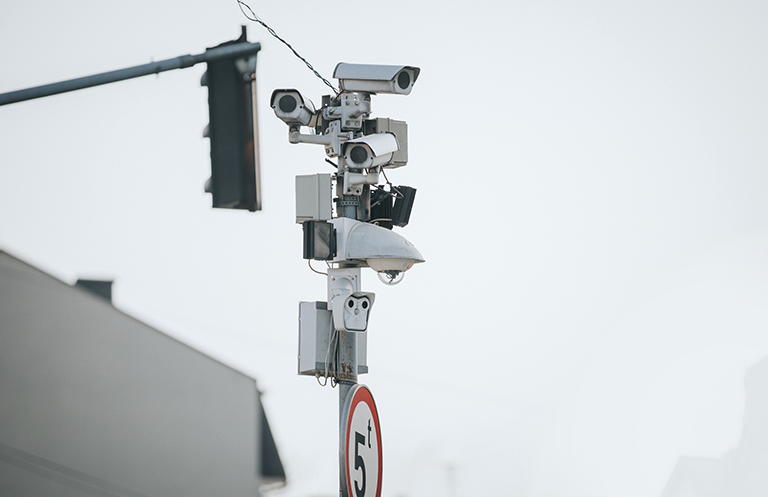According to IATA, global air traffic will continue to witness rapid growth in the next few years. Accordingly, the need to ensure better aviation safety standards and efficiency has acquired greater significance.
Take the example of radar coverage. Today, considering a rise in fleet traffic worldwide, airplanes have to be monitored and controlled with greater accuracy over a greater percentage of the earth surface than has ever been needed in the past. Even today, huge swathes of the Pacific Ocean near Australia and Hudson Bay in Canada are not under any radar coverage. For such expanses that are not under the radar surveillance, a new technology called Automatic Dependent Surveillance Broadcast systems (ADS-B) has emerged which allows the remote aircraft to be visible on ATC screens using tactical deployment of low cost ADS-B receiving stations.
Aviation bodies like Airport Authorities of India, SESAR and the Next-Gen programme have recognized ADS-B as one of the most pioneering technologies in the aim of converting ATC from existing radar-based technologies to satellite-based global positioning system (GPS) surveillance.
What is ADS-B and how does it work?
ADS-B is a broadcast surveillance system used across aircraft-to-ATS and aircraft-to-aircraft applications. An aircraft with ADS-B enabled can determine its location on GPS which can then be broadcasted at rapid intervals to ADS-B receiving stations on the ground, along with other information like altitude, velocity, flight number. This helps in proper tracking of aircraft movement at all times while eliminating dependence on radar stations greatly preventing scenarios like the infamous MH-17 disappearance from radar.
The dedicated ADS-B ground stations utilize the received broadcast and further transmit the data to ATCs for accurate aircraft tracking. ADS-B brings into play latest technologies including space satellites, transmitters, and receivers to deliver highly specific information about airplane location and speed.
There are two concepts of ADS-B to bear in mind: ADS-B IN and ADS-B Out, as per the standpoint of an airplane. Aircrafts transmit ADS-B Out signals to the ground station or receiving aircraft. The ADS-B Out signals travel a line-of-sight from transmitting aircraft to receiving aircraft. ATCs of these ground stations, and of the other aircraft that are in the vicinity of the transmitting aircraft, receive ADS-B Out signal for the purpose of displaying air traffic. The receiving aircraft has Cockpit Displays of Traffic Information (CDTI) that showcase information relating to aircraft location (Altitude, velocity, longitude, latitude, flight number).
The received ADS-B signal is called ADS-B In. Cockpit Display of Traffic Information can display traffic both near and away from the aircraft, at a distance of no more than 100 nautical miles of maximum range between transmitting and receiving aircraft. The ADS-B Out receiver of transmitting aircraft, sends across location and velocity information along with other data such as flight numbers and emergency status to the ground ADS-B and receiver aircraft ADS-B using digital datalink (1090 Mhz). Now, the aircrafts equipped with GPS receivers can determine their own location and velocity with the help of precise timing information sent by navigation satellites. ADS-B In receivers avail real time information of air traffic for the receiving aircraft as well as ground stations.
Further, airport taxiways and runways can also be monitored since ADS-B works very well at low altitudes, and on the ground. Furthermore, they can prove to be very useful in remote areas where radar coverage of radar is either not available or is severely limited.
ADS-B brings multiple benefits along with capacity, efficiency and security:
- Situational cognizance of pilots and flight crew can be improved because ADS-B can predict their relative location compared to other aircrafts in the vicinity.
- Provides real-time information and a collective surveillance picture to be shared in the event of any aircraft deviating from their assigned flight paths.
- Compared to radar, ADS-B provides more precise and well-timed surveillance information as signals are sent out every half second.
- ADS-B displays both airborne and ground traffic (taxiways and runways of airport).
- It helps service the maintenance of runway approaches using cockpit display of traffic information in minimal visible weather environments.
- It improves discernibility of all aircraft in the expanse to allow more aircrafts to use similar runways.
- Improved procedural separation in non-radar airspace (NRA) compared to present separation (potentially 3 to 5 nautical miles).
- With the help of more precise data, more numbers of aircrafts can fly together.
- As an aircraft will fly with more efficient path, fuel consumption will be greatly reduced.
- ADS-B can be implemented rapidly with relatively low cost as per existing digital technologies.
FAA has recognized that ADS-B can aid as the foundation of next wave in aviation safety, conveying the accuracy and trustworthiness of satellite based surveillance to the country’s skies.
With in-depth aerospace domain knowledge coupled with end-to-end technology capability and process (DO-178B/C, DO-254, and DO-160) expertise, eInfochips has supported DO-254 FPGA verification and DO-178C software verification for next-generation communication systems that were using multiple satellite communication systems. Leveraging deep expertise in navigation and communication systems, we have supported the DO-254 design and verification for next-generation Iridium-based SATCOM for transport aircraft. Additionally, we have implemented the Runway Overrun Awareness and Alerting System (ROAAS), enhancing safety and operational efficiency.
For more details on eInfochips aerospace expertise, write us at marketing@einfochips.com












